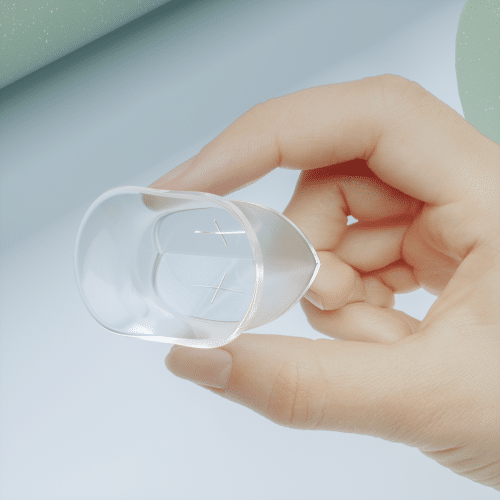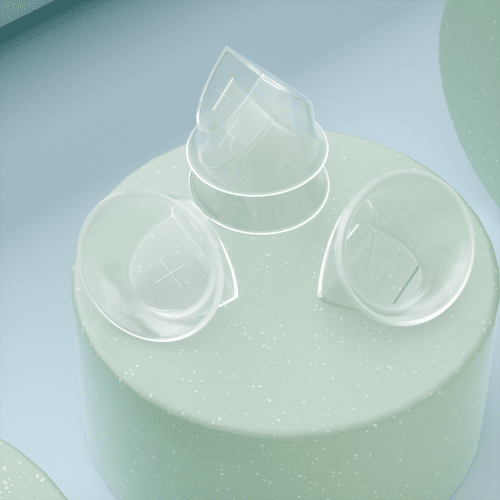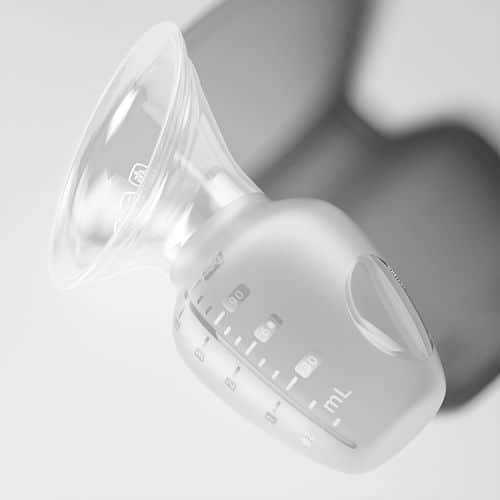Breastfeeding is an innate and crucial process for providing nourishment to infants; however, there may be obstacles that require the use of devices such as breast pumps. Silicone duckbill valves are a type of device that is crucial for the effectiveness and function of breast pumps. This article explores the functions, benefits, and essential features of the silicone duckbill valve and discusses how important it is to the advancement of breast pump technology.
Introduction to Breast Pumps and Their Components
Breast pumps are specialized devices used by nursing mothers to remove milk from their breasts mechanically. For mothers who need to manage supply issues, store milk for later use, or relieve discomfort from engorgement, these tools are unavoidable. The breast shield, or flange, which covers the breast; a manual or electrically powered pumping mechanism; tubing connecting the breast shield to the milk collection container; and valves or membranes ensuring effective suction and milk flow are the main parts of most breast pumps.
These parts often contain silicone, which is appreciated for its comfort, hygienic qualities, and durability. Knowing each component’s function and how it functions as a whole can greatly improve the pump’s efficiency and usability, giving moms more flexibility and control over their breastfeeding experience.
The Role of Silicone in Breast Pumps
Because silicone has such outstanding qualities, silicone is essential to the construction and operation of breast pumps. Silicone is a highly valued material in medical applications, particularly when it comes into contact with delicate materials like breast milk. This is because silicone is non-reactive, hypoallergenic, and free of harmful chemicals like BPA. In addition, silicone is pliable and soft, giving moms comfort by simulating the feel of a baby’s natural latch. Because of the pump’s durability and resistance to heat, the pump can endure multiple sterilization processes without breaking down, guaranteeing that it is secure and hygienic for ongoing use. These characteristics make silicone an ideal choice for a variety of breast pump parts, such as breast shields, diaphragms, and valves, all of which improve the pump’s performance in general and user experience.
Understanding the Silicone Duckbill Valve
The silicone duckbill valve, so called because of its uncommon form that resembles a duck’s bill, serves as vital to the operation of many breast pumps. Premium silicone was used to create this valve owing to its durability and safety in medical settings. The duckbill valve, a one-way gate in the pump system, makes sure that the milk flows readily from the breast shield—where it is expressed—into the milk bottle, where it is stored.

Because of the way it is made, the valve can open when milk is pumped under pressure and close effectively when the suction stops.
This crucial step stops any milk from backflowing, which is necessary for maintaining the expressed milk’s usability and purity as well as the pump’s structural integrity. Backflow has the potential to contaminate milk and seep into the pump mechanism, which may cause damage or the growth of mold. The silicone duckbill valve makes sure the breast pump works efficiently, safely, and hygienically by managing the milk flow while providing a dependable seal, improving the breastfeeding mother’s experience in general.
How Does the Duckbill Valve Work?
The duckbill valve, which was cleverly created to enable efficient and hygienic milk extraction, is an important component of how a breast pump works. This valve, which generally consists of soft, flexible silicone, gets its name from its unusual shape, which resembles a duck’s bill. The marriage of gentle touch and durability renders this material choice perfect for breastfeeding accessories that are used often. In use in reality, the duckbill valve governs the milk flow within the breast pump by taking advantage of its one-way construction. The internal pressure in the pump’s collection chamber drops when suction is applied to the breast during the pumping process. The silicone valve’s two flaps open outward as a result of this pressure drop, allowing milk to pass through the breast shield and into the milk collection bottle. The smooth and continuous operation of the pumping session is made possible by the valve’s design.
The flaps return to their closed position when the suction stops, either at the end of a session or between pumps, because the silicone’s inherent resilience allows the internal pressure to stabilize. This closure is vital for the reason that it keeps any milk from seeping back into the pump’s mechanical components or back toward the breast. Such a backflow could harm the pump or promote the growth of bacteria and mold in addition to contaminating the milk and rendering it unfit for usage in the future.
To make sure that the breast milk is extracted, stored, and kept in a condition that is safe for the infant to eat as well as to maintain the longevity and hygienic conditions of the breast pump itself, the duckbill valve functions as a barrier that protects against bacterial growth and other problems. Because of its ingenious application to fundamental mechanical principles, the breast pump is a reliable and effective aid for nursing moms.
Benefits of Silicone Duckbill Valves

Breast pumps’ design and operation are primarily reliant on silicone duckbill valves, which also provide a host of advantages that improve the whole pumping experience. These valves are distinctive in that they are made of medical-grade silicone and have features that make them safe, effective, and easy to use.
• Safety and Hygiene
One of the most important benefits of silicone duckbill valves is their high level of hygiene. The natural capacity of silicone to withstand microbial growth makes it a vital element of any device used in milk collection. The smooth surface of the material reduces the potential for bacterial contamination by making cleaning and sterilization simple. To safeguard the health of their unborn child, nursing moms must make sure that every component of their breast pumps is free of contaminants.
• Cost-effectiveness and Durability
Silicone is well-known for its resilience and durability, which are essential characteristics for parts like the duckbill valve that endure exposure to frequent stress and temperature changes. Unlike valves made of less resilient materials, these do not break easily, wear out, or lose their shape. As a result, they do not require replacement as often. Due to their long lifespan, silicone duckbill valves are a cost-effective option for breast pumps that will be used extensively.
• Pumping Efficiency
By guaranteeing a steady and trustworthy milk flow, the silicone duckbill valve is a vital component of a breast pump’s operation. Because of the way the valve is made, milk is unable to backflow because it can open precisely when a suction happens and close securely when the suction stops.
• Leak Prevention
The silicone duckbill valve’s tight seal is essential for stopping leaks and backflow. This keeps the milk collected sterile and shields the pump from moisture damage, which might cause it to malfunction or encourage the growth of mold and mildew. Mothers can rest easy knowing that their pump will continue to function properly and that their expressed milk is stored safely.
• Comfort of the User
Last but not least, silicone’s pliability and softness make pumping more comfortable. Pumping is quieter and more relaxing because of the valve’s soft interaction with other pump parts, which decreases noise and vibration. This is particularly useful for raised or frequent pumping sessions when comfort is essential to a successful and stress-free experience.
Comparison With Other Valve Types
Due to their special blend of superior functionality, advantageous material, and straightforward design, silicone duckbill valves are particularly well-suited for breast pumps when compared to other valve types used in a variety of applications. Duckbill valves, as opposed to ball and spring valves, are made of a single piece of silicone and do not require precise alignments or tolerances for proper operation. As a result of its simplicity, there is less chance of mechanical failure and less maintenance required. The duckbill valve’s capacity to form a responsive, tight seal that stops backflow and leaks are made possible by silicone’s flexibility, which serves as essential for preserving the safety and quality of breast milk.
How to Choose the Right Silicone Duckbill Valve for Breast Pump?
Selecting the appropriate silicone duckbill valve for a breast pump is vital for guaranteeing maximum efficiency, hygienic conditions, and longevity. The quality of the material should be taken into account first when choosing a duckbill valve. Make sure the silicone is medical grade and devoid of chemicals that could enter the breast milk and cause issues with health, like phthalates, BPA, and latex. Additionally, the valve needs to be sufficiently durable to resist repeated use and sterilization without losing its elasticity or shape, which might decrease its efficacy. Furthermore, confirm that it is compatible with the model of breast pump you are using; to avert leaks or suction loss, the valve needs to fit tightly and securely.
The silicone duckbill valve is a vital component that plays a major role in the effectiveness and working of a breast pump. Its material and creation provide unmatched performance, usability, and safety—all of the qualities that are essential for nursing moms. Mothers can ensure a successful and stress-free breastfeeding experience by comprehending and taking care of this component appropriately. Taking into account the most recent technological developments could enhance this important facet of newborn and mom’s health even more.

